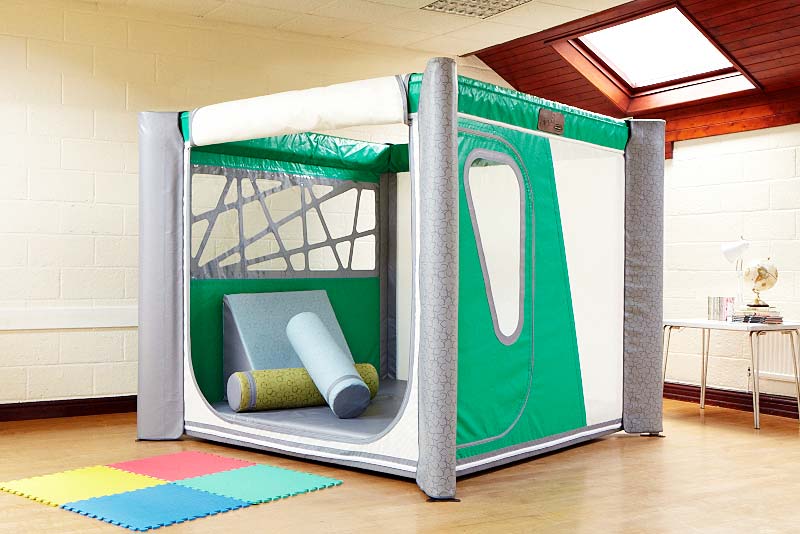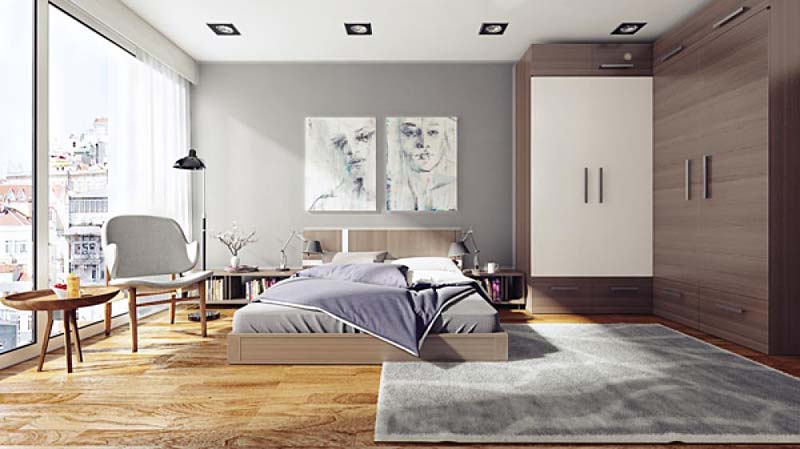Designing a Bedroom for Children on the Autism Spectrum
Since April is National Autism Awareness Month, we decided that writing an article on designing spaces for children with autism was quite fitting. Like with all children, every child on the autism spectrum is unique with individual preferences and interests. Developing great autism bedroom designs requires a different approach to constructing the living space than with a regular bedroom design.
Not to mention that the spectrum is also quite wide, so all of those on the spectrum have different needs and tolerance levels. Therefore, these design ideas should be seen as basic guidelines and not as a one-for-all solution.
Why Choice of Color Matters

When it comes to designing spaces for your child to live, learn, and sleep in, color and pattern are major areas for consideration. Patterns can be overly-stimulating, so it is best to stick to solid colors when picking out everything from linens and furniture, to wall color.
Since color greatly impacts mood, you will want to stick to certain colors to drive certain effects; for example, brighter colors can be good for learning and play rooms, whereas you will want more natural and calming colors in the bedroom.
Speaking of natural colors, this goes hand in hand with texture as well. Stay away from cold and texture-less furniture like iron or steel and stick to more rustic designs with wood and a lot of natural materials; this is not only more calming, but also warm and inviting.
Integrating Separate Zones
That being said, you should create designated space for different types of activity. Creativity and learning should be in one designated space, another for playing, and one for rest and sleeping.
Creating a conducive sleep environment is particularly important, as problems with waking at night feeling agitated, or even problems with insomnia, are quite common within the autism community. First of all, the environment should be dark, which you can create through the use of blackout curtains. Just keep in mind when purchasing curtains that you adhere to the color rules above and go with a solid, soothing color – no pattern. The walls should also be a restful color.
Choose a mattress that doesn’t bounce or move, like latex or memory foam models, especially since mattresses designed with springs can cause added pressure on the points where the body meets the mattress.
This can be uncomfortable for anyone, but it’s overwhelming for someone with heightened sensitivity. For instance, Eve’s memory foam mattresses have temperature regulation technology that, according to one review, results in a pleasantly cool experience.
This type of mattress is worth considering, as it will help to keep the sleep environment more calming and soothing. Lots of pillows can also be beneficial, especially body pillows if you want to encourage stomach sleeping for better digestion, and limit the room entirely to sleeping.
A Little About Light in the Bedroom

The rule of thumb is that soft, natural lighting is best; during the day this means light from outside. Of course. outside also comes with its distractions, so you may have to adjust accordingly if outside stimuli is too distracting. In the evening, however, darker is better. As was mentioned before, blackout curtains can be a good idea, as well as dimmer switches for a pleasant transition from light to dark.
When possible, softer light should be used and fluorescent lights should be avoided at all costs, as they create unpleasant flickering at high frequencies. Although it is normally only obvious when the frequency slows down, this flickering (as well as sometimes auditory buzzing) is perceived by many on the autism spectrum.
Recommended Resources and Further Reading
- Styling the space :Â Rustic bedroom design ideas
- Bedroom innovations :Â Clever headboard designs
- Maxing small areas bigger :Â Small bedroom ideas
Let’s Talk About the Noise
And with this last point, let’s speak about noise. Noise can be a very overpowering sensory input. There are noises that overwhelm and there are also noises that sooth. It can be a good idea to hang certain elements on the walls and put down carpeting in order to absorb sound throughout the house, particularly sound transfer between rooms.
This can be everything from the storage solutions you use to hanging things like quilts on the walls. When it comes to calming sounds, often things like ventilators, air purifiers, or white noise machines work well to induce calm and can be particularly useful in the designated relax and sleep environment, and can also help to drown out external noises as well.


